#Japan Taiko Drummers
Explore tagged Tumblr posts
Text
Yamato Japanese Drummers Live! 2023 Philippine Tour
Experience the Rhythms of YAMATO with the Best of Japanese Drumming. Live in Manila and Davao this June! The world-renowned traditional Wadaiko drum group from Japan will be performing in the Philippines once again at the Theatre at Solaire in Manila on June 11 and at Philippine Nikkei Jin Kai International School in Davao on June 13. Organized by The Japan Foundation, Manila (JFM) and…

View On WordPress
0 notes
Text
Matsuriza Taiko Drummers at Japan Pavilion in EPCOT




#Japan Pavilion#Matsuriza#Taiko Drummers#Drumming#Drums#Epcot#Orlando#Florida#Walt Disney World Resort#Disney#Theme Park#Walt Disney World#Disney Parks
37 notes
·
View notes
Text
KRIST’S LEGENDARY TAIKO DRUM SOLO
He’d probably be the first to quibble with the adjective, but that’s how I think of it.
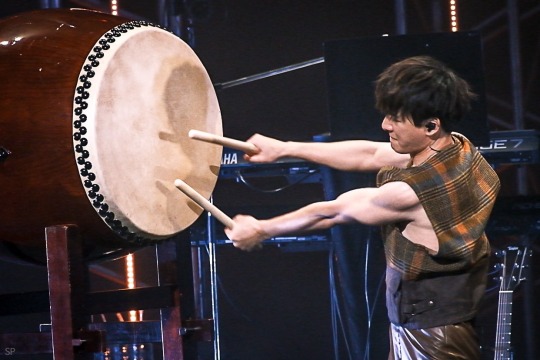
In April of 2023, Krist kicked off his first solo tour around Asia in Japan. This tour was three years in the making, originally planned for 2020 when the world shut down. In that time, he did more planning and made it even bigger, including different features for every individual country he’d visit as a nod to their respective cultures.
Krist has committed a lot of time and effort in recent years to vocal training—to the extent that I think he’s genuinely the best live singer GMMTV has. He’s dynamic, he has incredible breath control, he knows how to improvise, how to move around the stage, how to belt. I saw his solo concert twice in November, and I count it as the second best I’ve ever seen. (The top can’t be beat because of Feelings.)
However! He’s not new to music in general, and has said over and over that he still considers himself more of a musician than a singer. He’s been playing the drums far, far longer, and in fact, that’s Singto’s first memory of him at Kasetsart: drummer in a band.
So when he visited Japan for the first leg of his tour, he decided to pay tribute to one of Japan’s most revered instruments: the taiko drum.
He studied not only how to play it correctly, but also its cultural and religious significance. And before he began his performance onstage, he wai’d before the drum to show his respect. It’s even been immortalized in chibi art form.
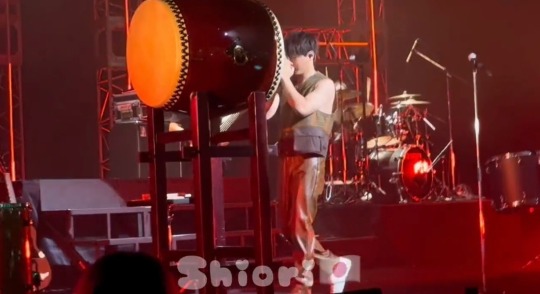
Then he casually shattered not just my whole brain but the whole brains of many.
[Vid Source: @KristFanClub]
It was such a popular performance that he recreated it for his final two concerts in Bangkok using a different type of taiko drum. (I think the one he used in Japan was a local rental.)
And while we don’t have full, official footage of the concert in Japan, Krist’s fan club was wonderful enough to record segments like the one above and share them afterward, and it’s become one of my all-time favorite performances of his.
Krist has had a vast and loyal fanbase in Japan ever since SOTUS aired in 2016, so I thought it was lovely that he started his tour there. In a behind-the-scenes interview after the concert, he said he was amazed and moved that his Japanese fans had already memorized a song he’d only released days before. And sang it with him. In Thai. He said something like, “I realized that they support all my work, and it makes me so happy.”
And in return for that love, he gave his Japanese fans a beautiful concert filled with respect for their country and culture and music.
That’s why, to me, it’s a legendary performance.
34 notes
·
View notes
Photo

GrojBand Comeback Tour - Kon Kujira
Support me over at Patreon: www.patreon.com/skulljackxiii
-------------------------------------------------------------------------------------------
(Note: I didn't change much about Kon since he fits the role that was given to him originally. But I thought adding a few more things would give more to his character. In the original show, I remember that Kon would put his body in harms way to act like the muscle of the group, but of course that was just played for comedy. But given his size I thought that giving him the role of security would give him more purpose in the band and highlights his other skills besides drumming. Since Kon loves hitting things, I thought that giving him the title of an Amateur Wrestling Champion, under the alias King Kon, would help explain his physical capabilities as a bodyguard and hints at his other passions, which would incite conflict of interest for the band later down the story. Kon will not be the only one...)
Role: Kon is one of the key members of Grojband, taking the role as the drummer of the band. Along side that, given his size and wrestling experience, he acts as part of the security/bodyguards during the band's travel across of the country. However despite that job, Kon and the other guys tend to find themselves to be at the center or cause of a situation that would put everyone's life in jeopardy, unintentionally and/or due to bad timing.
Bio: Kon lived in Japan most of his life with his brother Kin and the rest of the Kujira Family, along with another named the Kagami Family. Parents of both families were inseparable friends who spent many years together, thus he and his brother grew up knowing the children of the other family, Kim and Konnie. Kon was fond with both of the girls and treated them like family, but Kim didn't feel the same and said that both him and Kin were just acquaintances who were forced to interact with each other by their families. Though that didn't bother him at all because he thought that she just had difficulties expressing her emotions.
Kon was a energetic kid when he was younger and spent his time training in judo and sumo wrestling. Though he found his second passion within music when he developed an addiction to a rhythm game called Taiko No Tatsujin during his free time and at festivals.Though that was the extent to his drumming experience and just practiced wrestling throughout his time in Japan.
One day, his parents were informed to be transferred overseas for work, so the Kujira Family, along with the Kagami Family, moved to America. With his accepting personality, it was quite simple for Kon to get along with people during his first week. But because there wasn't any clubs or facilities that practiced his wresting style, he felt so lost with so much free-time in his hands. But one day he was suddenly approached by a classmate about a proposition that he might be interested in. His name was Corey Riffin and he said that he knew that he needed to have Kon in his band after listening to all the tapping and beating he does on his desk during class. At that moment Kon knew that this was his chance to be a real drummer and create his own beats that people would enjoy. Without hesitation, Kon accepted and mentioned that he wanted his brother to join too as he's a veteran musician that won awards before.
59 notes
·
View notes
Video
youtube
Yamato - The Drummers of Japan - Live Street Performance - Taiko Drums -...
3 notes
·
View notes
Text
Exploring the Enchanting World of Traditional Japanese Instruments
Japan's rich cultural heritage is beautifully preserved in its traditional music, which is brought to life by a diverse array of captivating instruments. These instruments have been cherished for centuries and continue to play a significant role in Japanese music, evoking a sense of nostalgia and showcasing the country's unique musical traditions. In this article, we embark on a journey to explore the enchanting world of traditional Japanese instruments, uncovering their distinctive sounds, origins, and cultural significance.
Stringed Instruments
- Koto: The koto is a revered instrument with a long history in Japan. Resembling a horizontal harp, it features 13 strings that are plucked using picks known as tsume. The koto's ethereal and resonant tones have made it an integral part of traditional Japanese court music and solo performances.
- Shamisen: As a three-stringed instrument, the shamisen is instantly recognizable for its distinctive twangy sound. Played with a plectrum called a bachi, this plucked instrument is commonly associated with traditional Japanese folk music, kabuki theater, and geisha performances.
- Biwa: The biwa is a short-necked lute-like instrument with four to five strings. It holds historical significance as a storytelling instrument and has been utilized to accompany epic narratives and ballads. The biwa's expressive and melancholic tones transport listeners to ancient Japan.
Wind Instruments
- Shakuhachi: Carved from bamboo, the shakuhachi is a traditional end-blown flute that has been used for Zen Buddhist meditation and the performance of classical music. Its hauntingly beautiful sound, with its breathy and meditative quality, embodies the essence of Zen philosophy.
- Hichiriki: An ancient double-reed woodwind instrument, the hichiriki is predominantly featured in gagaku, Japan's court music. This instrument, with its piercing and rich timbre, adds depth and character to traditional ensembles and ceremonial music.
- Sho: The sho is a mouth-blown free-reed instrument, reminiscent of an organ, used in gagaku orchestras. Its complex harmonies and ethereal tones provide a unique and otherworldly dimension to the ancient court music.
Percussion Instruments
- Taiko: The taiko drums are a collection of large barrel-shaped drums that create thunderous and resonant beats. Used in religious ceremonies, festivals, and theatrical performances, taiko drums symbolize power, energy, and the spirit of unity.
- Tsuzumi: Tsuzumi drums are hourglass-shaped hand drums that accompany traditional Japanese theater forms such as Noh and Kabuki. The drummer's skilled technique produces various pitches, enhancing the dramatic elements of performances.
- Shime-daiko: This smaller, high-pitched drum is often used in festivals and folk music. Its vibrant and rhythmic beats provide a lively backdrop for traditional dance performances and celebrations.
Conclusion
Traditional Japanese instruments form an integral part of the country's cultural fabric, preserving its unique musical heritage. From the graceful melodies of the koto to the soul-stirring sounds of the shakuhachi flute, each instrument carries the essence of Japan's rich history and artistic expression.
These instruments serve as a gateway to Japanese culture, offering a glimpse into the traditions, rituals, and emotions that have shaped the nation. Whether it's the resonating strings, breathy woodwinds, or thunderous percussion, each instrument holds a special place in the hearts of both performers and listeners.
As we explore the world of traditional Japanese instruments, we embark on a journey that transcends time and borders, connecting us to the beauty and depth of Japan's musical traditions. It is through these
3 notes
·
View notes
Text

A group of high-energy taiko or wadaiko drummers performs outside the cruise terminal in Akita, Japan.
1 note
·
View note
Text
What Are the Big Japanese Drums Called?

Japan has a rich and vibrant musical heritage, and among its most iconic and powerful instruments are the big Japanese drums. These drums not only produce thunderous and captivating sounds but also hold significant cultural and historical value. They are an integral part of various traditional Japanese festivals, ceremonies, and performing arts. In this article, we will explore the different types of big Japanese drums, their characteristics, construction, playing techniques, and the cultural contexts in which they are used.
Taiko: The General Term and Its Significance
Definition and Origins: The term “taiko” is a broad Japanese word that generally refers to drums. Taiko has a long history in Japan, dating back centuries. It was initially used in religious and military contexts. In shrines and temples, taiko were played to communicate with the divine and to mark important religious ceremonies. In the military, the powerful sound of taiko was used to boost the morale of soldiers and to signal commands on the battlefield. Over time, taiko evolved and became an essential part of folk and performing arts.
Cultural Symbolism: Taiko is much more than just a musical instrument. It is a symbol of Japanese culture and identity. The sound of taiko is believed to have the power to purify the environment and bring good luck. It is often associated with strength, vitality, and the spirit of the community. In festivals and parades, the presence of taiko drums creates a lively and festive atmosphere, uniting the people and celebrating their traditions.
Odaiko: The Grand and Powerful Drum
Size and Appearance: The odaiko is one of the largest and most impressive of the Japanese drums. It can have a diameter ranging from about 60 centimeters to over 2 meters and a height of several feet. The drum body is typically made of a single piece of wood, usually a hardwood like oak or zelkova. The surface of the drum is covered with a thick and taut animal hide, usually cowhide or horsehide. The hides are carefully selected and treated to ensure optimal sound quality. The drum is often painted in bright and bold colors, such as red or black, and may have decorative elements like gold leaf or intricate carvings.
Playing Technique: Playing the odaiko requires great strength and skill. The drummer uses large and heavy drumsticks, calledbachi. These bachi can be several feet long and are made of hardwood. The drummer strikes the drum surface with powerful and deliberate movements. The strokes can vary in intensity and rhythm, creating a wide range of sounds from deep and booming lows to sharp and resounding highs. In some performances, multiple drummers may take turns playing the odaiko, building up a complex and energetic rhythmic pattern.
Role in Performances: The odaiko is often the centerpiece of a taiko ensemble. Its powerful sound commands attention and sets the tempo and mood for the entire performance. It is used in traditional festivals like the Gion Matsuri in Kyoto, where it is paraded through the streets, accompanied by other musical instruments and dancers. In theatrical performances, the odaiko can add a sense of drama and excitement, enhancing the overall experience for the audience.
Wadaiko: The Diverse Family of Drums
Types and Variations: Wadaiko is a more inclusive term that encompasses a variety of taiko drums with different sizes, shapes, and characteristics. For example, the shime-daiko is a smaller and thinner drum compared to the odaiko. It has a higher pitch and is often used to provide a sharp and clear rhythmic accent in a taiko performance. The nagado-daiko is a medium-sized drum with a long and narrow body. It has a balanced tone and is versatile in different musical arrangements. The tsuzumi-daiko is a handheld drum that is played by squeezing and releasing the laces that tighten the drumhead, producing a unique and dynamic sound.
Construction Differences: Each type of wadaiko has its own construction features. The shime-daiko may have a wooden frame with a thinner animal hide, allowing for its higher pitch. The nagado-daiko’s longer body gives it a distinct resonance. The tsuzumi-daiko’s unique design with its adjustable tension mechanism enables the player to control the pitch and tone easily. The choice of wood and hide also varies depending on the desired sound quality and durability of the drum.
Musical Applications: Wadaiko drums are used in a wide range of musical compositions and performances. They can be part of a large taiko ensemble, where each drum type contributes to a complex and harmonious rhythm. They are also used in traditional Japanese music genres like gagaku, where they blend with other instruments such as flutes and stringed instruments. In modern taiko performances, wadaiko are often combined with contemporary music elements, creating a fusion of traditional and modern sounds.
Playing Styles and Techniques of Big Japanese Drums
Kata: The Form and Movement: Kata refers to the specific body movements and postures that drummers adopt while playing taiko. These movements are not only aesthetically pleasing but also help the drummer to generate more power and control. For example, a drummer may have a wide and stable stance, with the body centered and balanced. The arms and shoulders are used in a coordinated manner to swing the bachi with maximum force. The movements of the body and the drumsticks are often synchronized, creating a visually striking performance.
Strokes and Rhythms: There are various types of strokes used in playing taiko. The basic stroke is a simple and powerful downstroke, where the bachi is brought down forcefully on the drum surface. There are also more complex strokes like the double stroke, where the bachi hits the drum twice in quick succession. The rhythms can range from simple and repetitive patterns to highly intricate and syncopated ones. Drummers often learn and practice a repertoire of rhythms, which they can combine and vary in different performances.
Group Coordination: In a taiko ensemble, the coordination between the drummers is crucial. Each drummer must be in sync with the others, following a common tempo and rhythm. This requires a high level of concentration and communication. Drummers may use visual cues, such as eye contact or body movements, to stay in time with each other. The leader of the ensemble often sets the tempo and signals changes in the rhythm, guiding the other drummers through the performance.
Cultural and Ceremonial Contexts of Japanese Drums
Festivals and Parades: Japanese festivals are a major platform for the display of taiko drums. In festivals like the Awa Odori in Tokushima, thousands of people participate in a lively dance and music parade. Taiko drums are carried through the streets, their beats setting the pace for the dancers and attracting crowds of onlookers. The sound of taiko in these festivals creates a sense of community and celebration, bringing people together to enjoy their shared cultural heritage.
Religious Ceremonies: In Shinto shrines and Buddhist temples, taiko drums are used in religious ceremonies. The powerful sound is believed to purify the sacred space and invoke the presence of the gods or buddhas. In some ceremonies, a single taiko may be played in a solemn and rhythmic pattern, creating an atmosphere of reverence and spirituality. The use of taiko in religious contexts dates back to ancient times and continues to be an important part of Japanese religious traditions.
Theatrical Performances: Taiko drums are also incorporated into traditional Japanese theatrical forms like Noh and Kabuki. In Noh theater, the taiko is used to create a specific mood and atmosphere, often accompanying the slow and stylized movements of the actors. In Kabuki theater, the taiko may be used in more energetic and dramatic scenes, enhancing the overall theatrical experience and adding a touch of excitement and spectacle.
Maintenance and Care of Big Japanese Drums
Drumhead Care: The drumhead, which is usually made of animal hide, requires regular care. It should be kept clean and dry to prevent mold and deterioration. If the drumhead becomes damp, it should be dried slowly and evenly to avoid cracking. Over time, the drumhead may need to be replaced, especially if it becomes worn or damaged. The tension of the drumhead can also be adjusted to maintain the optimal sound quality.
Drum Body Upkeep: The wooden body of the drum should be protected from extreme temperatures and humidity. It can be polished regularly to maintain its appearance and protect the wood. Any scratches or dents on the body should be repaired promptly to prevent further damage. The fittings and hardware on the drum, such as the ropes and metal rings, should be checked and tightened regularly to ensure the stability and integrity of the drum.
Storage Conditions: When not in use, Japanese drums should be stored in a proper environment. They should be kept in a dry and cool place, away from direct sunlight and sources of heat or moisture. The drums can be stored upright or on their sides, depending on their size and design. It is also advisable to cover the drums with a cloth or a protective cover to prevent dust and dirt from accumulating.
Conclusion
The big Japanese drums, with their various types and rich cultural significance, are a remarkable part of Japan’s musical and cultural landscape. From the grand odaiko to the diverse family of wadaiko, each drum has its own unique characteristics and applications. The playing techniques, cultural contexts, and maintenance requirements all contribute to the complex and fascinating world of these drums. Whether in festivals, religious ceremonies, or theatrical performances, the sound of Japanese drums continues to captivate audiences around the world and preserve the traditions and spirit of Japan. They are not just musical instruments but also a living testament to Japan’s history and cultural heritage.
1 note
·
View note
Text
Drums have something that other instruments don't have: They sweep us along. We find them cool, we sometimes love the drummer of a band more than the singer standing at the front of the ramp.
Or we play the drums ourselves and suddenly feel like we are in seventh heaven, in a trance, in Japan or Africa, because we are playing a taiko or a djembe. Drums tell great stories.
1 note
·
View note
Text
Japanese Instruments
When writing about a different culture, it’s hard to fully show all the different things in a story without stopping to focus on certain things. One of the things I wish I didn’t have to gloss over so much is the instruments seen in my story Survival. From a storytelling point of view it made sense not to spend much time on them, but I find them interesting.
For the story, I tried to keep it simple and only named a few instruments for the light festival. I named wadaiko, oodaiko, atarigane, and flutes. Later on we also see the koto. But what are they?
Taiko

The larger taiko are nagado daiko, the smaller are shime daiko. Outside of Japan, we use the term taiko to refer to any Japanese drum, however there are many different drum shapes and sizes, each creating a different sound, and each has a different name.
The most popular and recognised type of taiko is the nagado daiko (also called miya daiko because it’s played in shrines and temples). The larger taiko are nagado daiko, the smaller are shime daiko.
Nagado daiko are made of a wood called keyaki and covered in cowhide. They are also played on stands and hit with sticks called bachi. The drummer can hit the head of the drum or change the sound by hitting the wooden or metal parts.
Similar to the nagado daiko is the Ō-daiko or oodaiko, a much larger drum which produces a deeper sound.
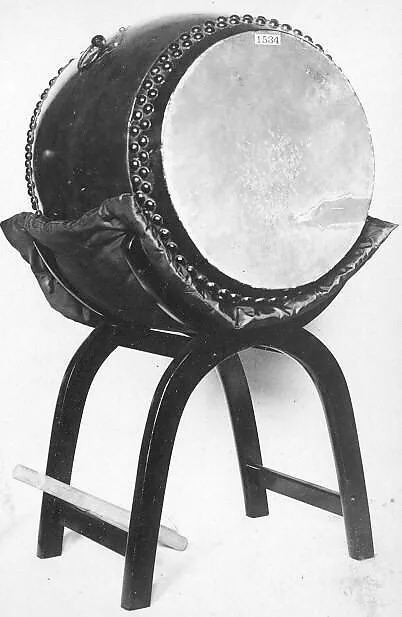
Oodaiko from the 19th Century. Both of these drums were played at festivals as well as having other purposes throughout history such as for the military, theatre, and religious ceremonies in shrines and temples.
The term wadaiko is a style of drumming on various taiko, full of movement and dynamic group drumming.

Bachi used for drums.
Japanese Flute
To try and keep my terms simple for my story, I omitted the name of the flute and just named it as a flute. However unlike western flutes, the Japanese shakuhachi is made of bamboo and has changed a few times over history. The first version was originally brought over from China and was named the kodai shakuhachi, however it died out around the 10th century. It came back into fashion, however, during the Muromachi period (the one I am writing in) and was named the hitoyogiri shakuhachi. A collective term for all japanese bamboo flutes is fue, in which the shakuhachi is included.
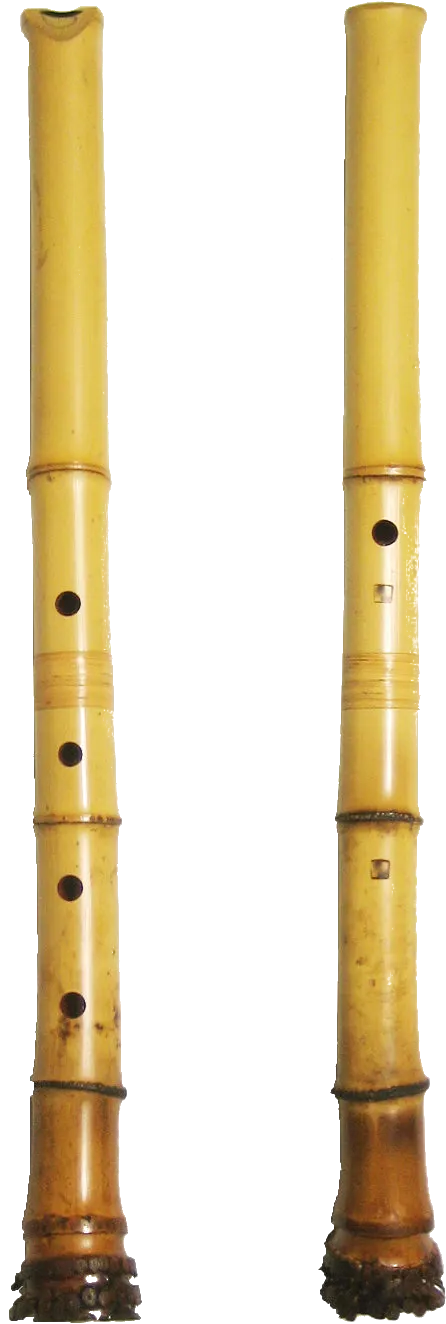
Atarigane
The last named instrument in my festival was the atarigane, a hand held gong which is hit with a mallet called a shumoku or kane yō bachi, made from bamboo and deer antler. They can also be suspended, however are most commonly held. These too are used in shrines and temples, being used in ceremonies and to signify time or certain events.

Koto
The koto is an instrument which is plucked along it’s 13 strings. It’s also now the national instrument of Japan, and very recognisable. It is made of wood, and decorated with ivory, and silk for the strings. Each part of the koto has a name related to dragons, as it is said the koto resembles a dragon itself.
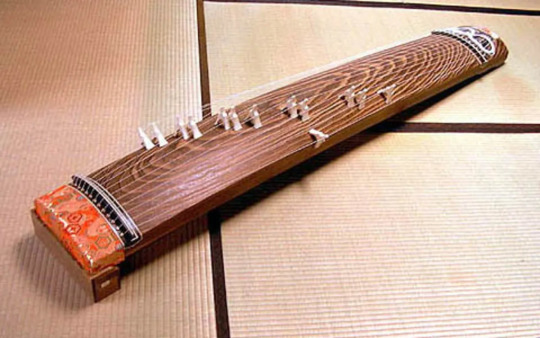
Other instruments
Although those are the only ones which have appeared in my stories so far, there are two other instruments I’d love to bring in if I can.
Shamisen
Another very recognisable instrument is the shamisen, a three stringed instrument plucked with a special plectrum called a bachi. These are different to the ones used by taiko.
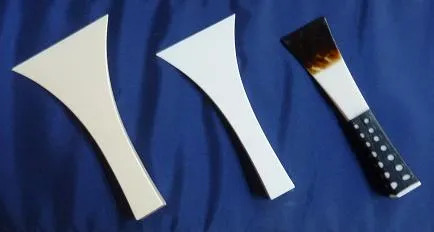
Bachi used for plucked instruments.
It is an instrument similar to a guitar or a banjo, and the body was traditionally covered with animal skin. The shamisen has three strings made from silk, stretched over the head which is made of wood.

"Flowers of Edo: Young Woman's Narrative Chanting to the Samisen" by Kitagawa Utamaro.
Shō
The shō is an instrument made of 17 slender bamboo pipes fitted to a base. Two of the pipes are kept silent on purpose to represent two wings, as the shō is said to sound like the call of a phoenix. It makes an unusual sound and one that maybe is recognisable without realising.
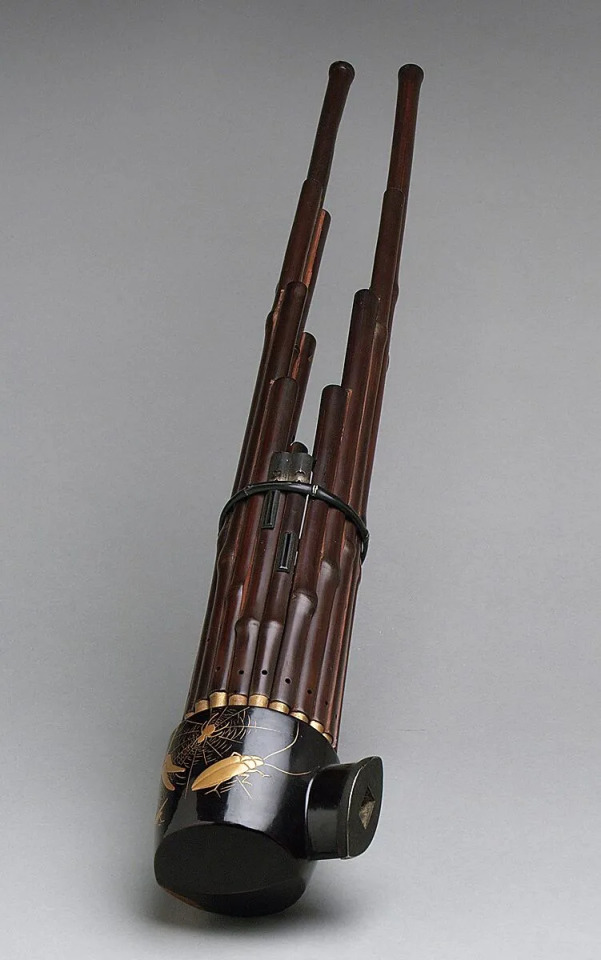
Examples
Taiko: https://www.youtube.com/watch?v=ZagsLrNzg3I
Oodaiko: https://www.youtube.com/watch?v=dj0F-MmPNLk
Shakuhachi: https://www.youtube.com/watch?v=miUKO5g0ONk
Atarigane: https://www.youtube.com/watch?v=7hUqdHCd4vs
Koto: https://www.youtube.com/watch?v=JDTp_YQizqE
Shamisen: https://www.youtube.com/watch?v=RcqO0zkyQRo
Shō: https://www.youtube.com/watch?v=yUpr1F1dZt0
#japan#musical instruments#shamisen#drums#japanese culture#writers on tumblr#writeblr#writers#writing#author
0 notes
Text
Our last day in Tokyo
I am behind - but not too far behind...
I am writing this July 1st as we cruise through the countryside on a bullet train heading to Nagoya. No one can even image that we are traveling at these speeds as the ride is smooth as silk.

Our big luggage is being shipped to Kyoto and we will re-unite in 3 days.
June 30 - Our last full day in Tokyo.
We started the day today at the Taiko drum studio. These are traditional Japanese drums and they are quite sensational. We were taught and entertained by a young woman and magnificant drummer. I love this kinda’s stuff and we have been to a Taiko Drum performance by Kodo long ago in Ann Arbor.
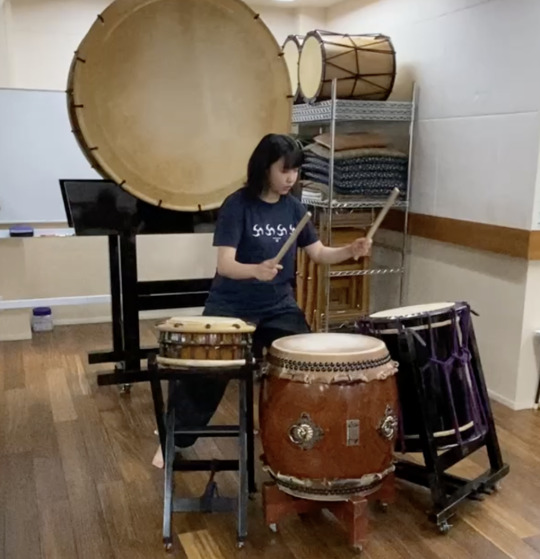
The Japanese word taiko means simply ‘drum’ in English, signaling how deep taiko’s roots go in Japanese culture. Over the years, taiko has taken on extra meaning and now also refers to various Japanese drums known collectively as wadaiko, or to an ensemble drum performance.
These big drums are made from a solid piece of oak that is hollowed out. Cow hide is stretched on the top and bottom and tuned. After achieving the tone desired they hide in nailed down and the stretching cords removed. The small drums are stretched and tuned with a medal bolt.
The black drum body is made from staves - like a barrel - and the hide is stretched with cords.
youtube
We had a great concert and then she led us in a little lesson. It was so much fun.
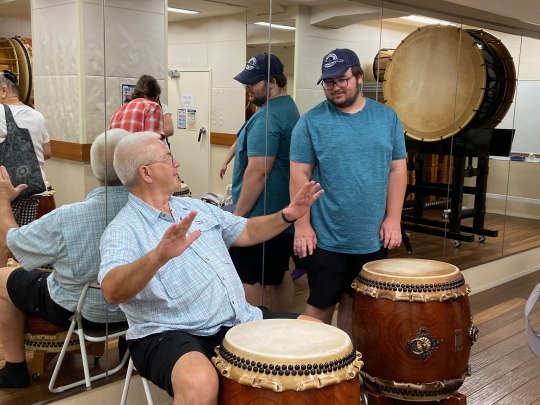
Today is rainy and overcast - but it is a welcome change from this heat in the 90s. It actually felt great this AM and I opted for a hat instead of an umbrella and enjoyed the cooling rain that soaked my shirt.
After drumming we walked to see the the Sensoji Temple and Shinto Shrine.
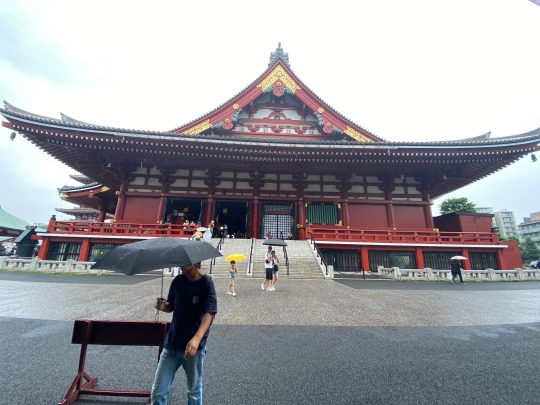
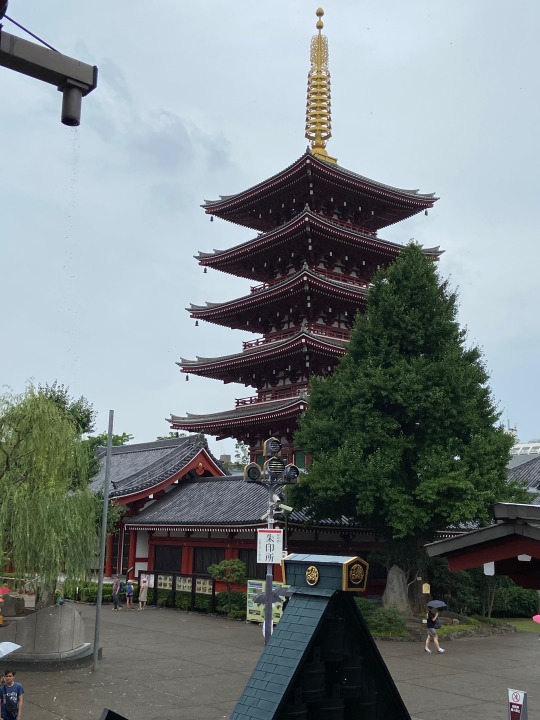
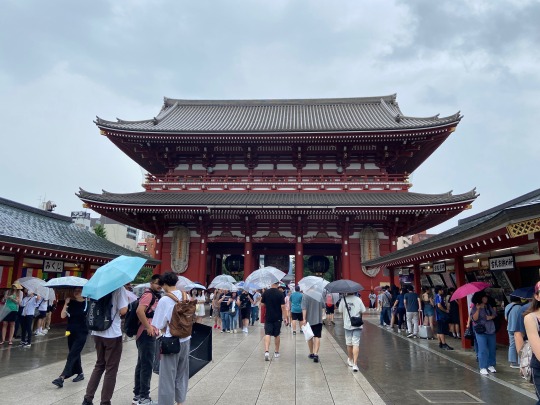
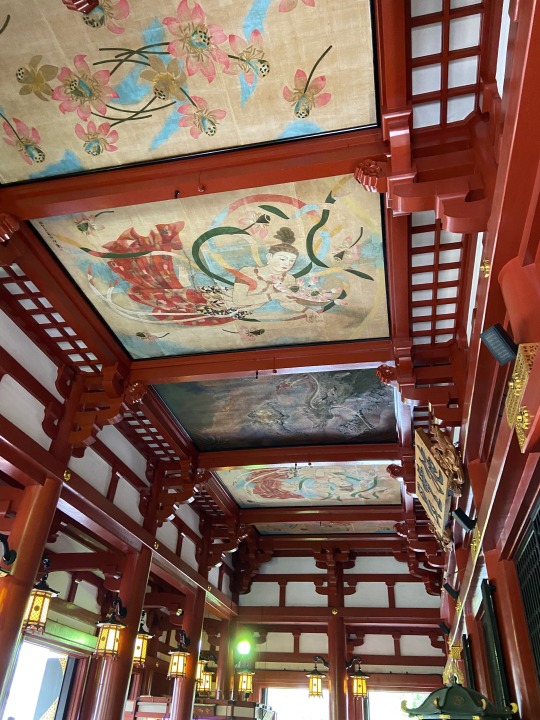
I specially loved the people dressed in kimonos.
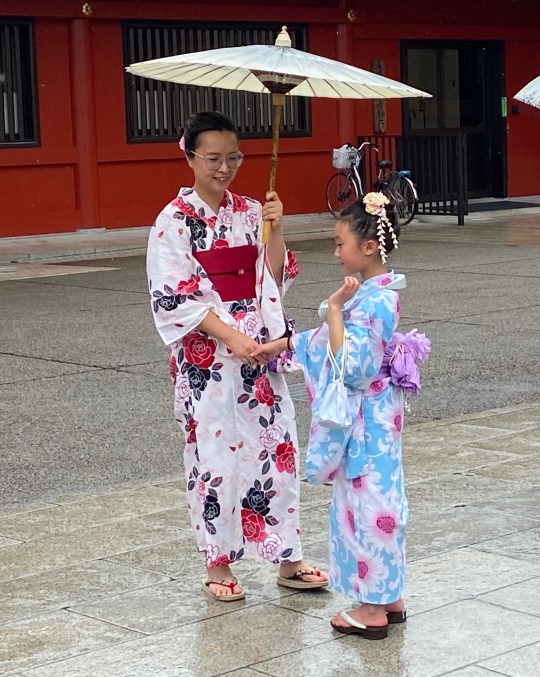
Someone asked us what is the traditional clothing of the US. Good question - huh? I guess the honest answer would be the beautiful regalia of the Native Americas - but that would change by region.
We had lunch by the river and then took the metro to the Shibuya Crossing - which apparently is the busiest street crossing in the world.

i confess not being so excited by this - but others were - so there you go. From here we went to the Imperial Palace home of Japanese Emperor Naruhito and Empress Masako. Emperor Naruhito is the 136th Emperor of Japan BUT he has only one child and sadly that child is just a lowly female - so she can not inherit the throne (I'll be right back, I need to vomit!). On Emperor Naruhito's death, his brother will inherit the throne and if the brother does not out live the current emperor his nephew will be the man. UNBELIEVABLE!!! But then it appears we are going in back in time in lots of ways....sigh....
Of course we could not go in the palace - but we did walk around the grounds.
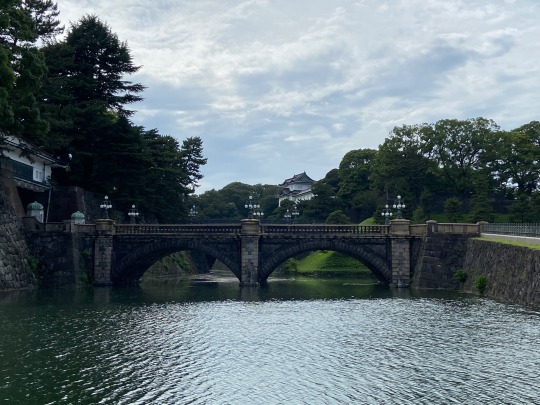
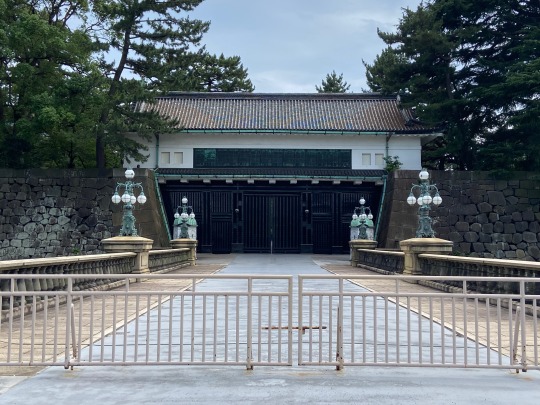
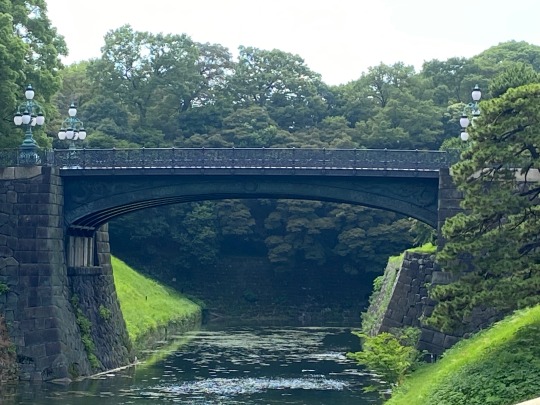
Dinner was on our own and I opted to go with Anson, Shannon, Jim, Maxine and Ken out on the town to find sushi. We are in the most expensive high end area of Tokyo - Ginza. Need a new Rolex or are your Pradas scuffed - this is place. You are greeted at the door by men in tuxedos and taken to the department of your hearts desire. Not exactly how I shop....
Anyway - we walked all over until we found this great little sushi place and let me say - YUM!!
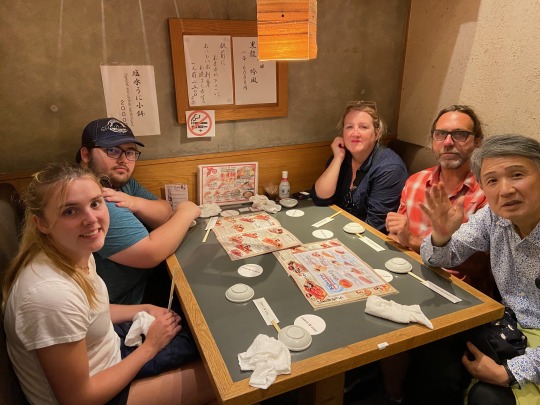
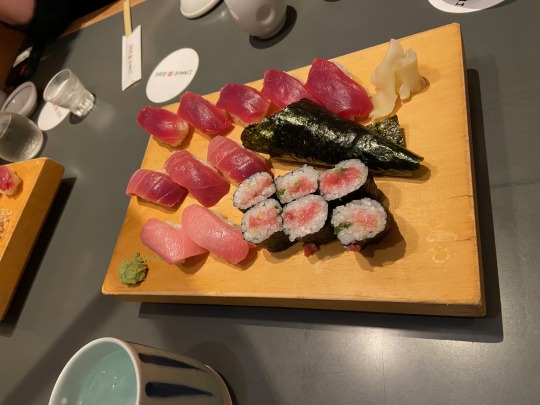

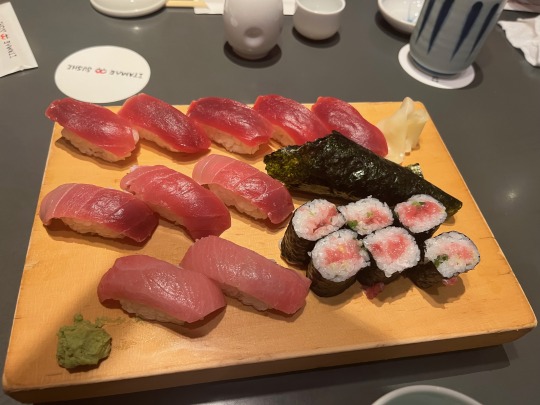
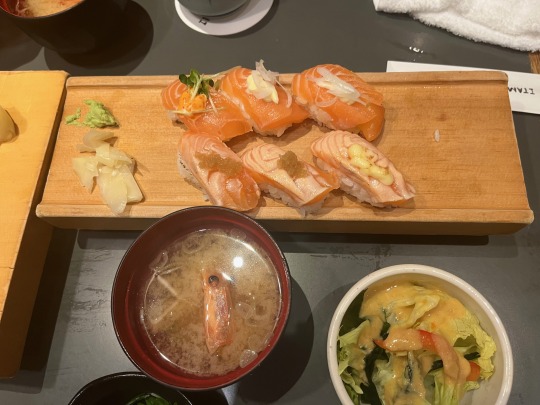

The night was young for some people at the table - but NOT for Ken and I and we headed back to the hotel. Anson is getting exposed to the big city and the number of strip clubs near our hotel. But the group just walked around and felt the beat of the nightlife but were back at the hotel by 10:00 PM. Ahhhhh - the big city.
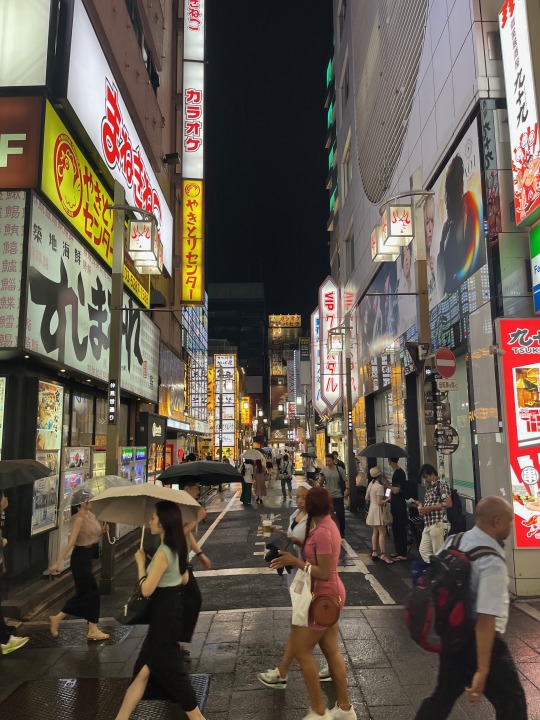
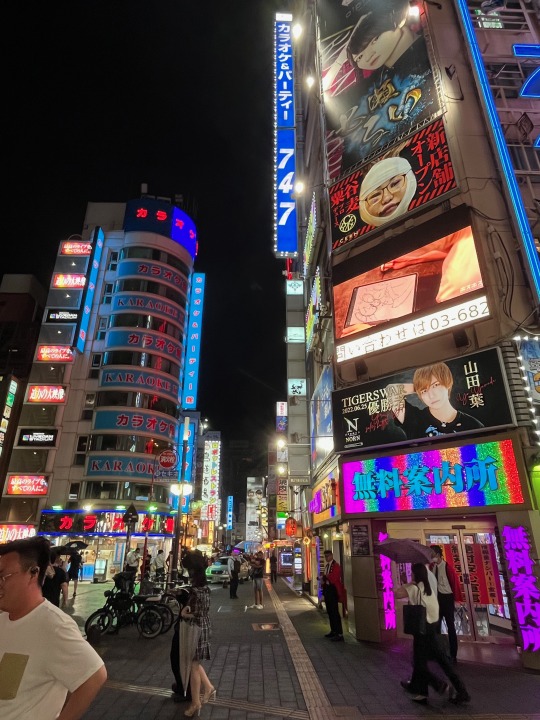
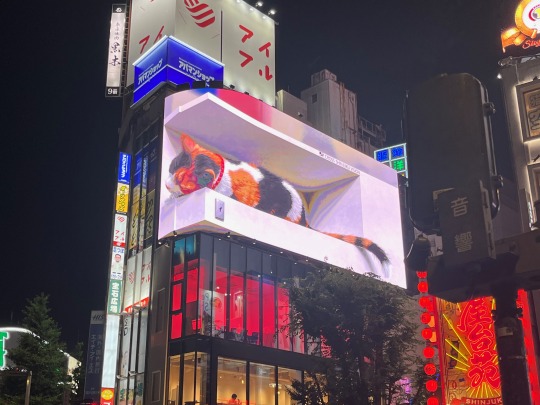
But they did see some amazing "billboards" - like the 3-D kitty. Cool huh? Tomorrow we leave Tokyo to explore other parts of Japan. Stay tuned.
1 note
·
View note
Text
June 4th, Tokyo Tower and Kabuki
Today we visited Tokyo Tower and saw a Kabuki play. Tokyo tower was constructed in the mid 1950’s as a communications tower to transmit to televisions and radios as the country was rapidly adopting new television technology after the end of WWII. from the observation deck you can get a good look at Tokyo’s massive landscape.
Later today, we saw a few acts of a Kabuki play. The actors are all male, which means many have to play the parts of women. It was a great spectacle, and all the actors were as dramatic and flamboyant as you might imagine. A special thanks should go to the excellent singing narrators, shamisen players, taiko drummers, flautists, and hyoushigi players who brought the play to life through their music performance.
I really liked this play, although the plotline was convoluted. However, the theater was so uncomfortable! I did not have one inch of room between my knees and the seat in front of me. My knees were in constant pain which detracted from the play. The theater also had very strict rules not to lean forward, no whispering, no pictures or videos, and no food or drinks, and no sleeping, all of which they enforced thoroughly. There was limited air conditioning in the theater, which meant that by each intermission I was sweating. In the halls of the theater where you can buy overpriced souvenirs, the stewardesses were unreasonably strict about voice volume, and frequently corralled me and my friends from congregating in the hallways. This all stands in stark contrast to Kabuki’s earlier history, in which the art form was democratized and accessible to all. Kabuki theaters were rough and rowdy places where patrons would eat, get drunk, shout and yell at the stage, and throw objects at it. I began to yearn in my seat.
Academic reflection
Tokyo Tower offers an excellent way to view Tokyo’s famously lax zoning laws. Schools, banks, factories, and apartments can all be found in close proximity, because strict separation of zones was never the idea behind Japanese city planning.
Kabuki play acting goes all the way back to the 14th century, when prostitutes would perform troupe dances to attract customers to their brothels. However, the Bakufu soon abolished this practice, which meant that only male actors could perform. Kabuki was an art form which appealed to the masses, especially during the Tokugawa era. As a result, kabuki actors created cults of personality, and had great sway fashion trends, even for women. Kabuki was the pop culture of the Tokugawa era inspiring ukiyoe art as well. However, after the meiji era, a period od great social change, Kabuki has taken on a new form as a more distinguished, high brow national art form of Japan. The rough and rowdy days of the shogunate are over, and it was on full display today.


1 note
·
View note
Photo










(More) Fushu Daiko @ the Lantern Festival - 19 Oct 2019
#fushu#daiko#taiko#drumming#drums#drummers#percussion#japan#japanese#lantern festival#bon festival#dojo#florida#south florida#954music#the other pages#theotherpages.org
4 notes
·
View notes
Photo





Japan Pavilion @ EPCOT
#And someday we'll look back and say it was fun#disney#epcot#pagoda#walt disney#matsuriza#taiko drummers#japan pavilion#torii gate#disney world#Mitsukoshi#Department Store#japanese cuisine#teppan edo#Takumi Tei#restaurant#cafe#disney parks#florida
1 note
·
View note
Text
The latest generation of Cephalopod Influencers has got me thinking about how far we’ve come in terms of localization since the ‘90s, where the prevailing attitude among companies like 4Kids was, “If an American child sees a reference to Japanese culture, they WILL burst into flames and die instantly, so we must replace all onigiri with jelly donuts.” We’re now in the second/third generation that’s been exposed to Japanese culture through growing up with anime, JPop, and other cultural exports from Japan, and Americans are finally starting to emerge from their cultural English-only isolation in terms of the media they consume beyond just Japan, so there’s been a major attitude shift over the past decade or so.
Like, Splatoon 2 was pretty open about its influences from Japanese culture from the Harajuku references to Marie’s outfit and the Squid Sisters’ & Capn’s backstories. But now it’s just all out there with these new kids. It’ll be interesting to see what changes the localization team makes with the translations, explaining to the Western audience in-universe about what appears to be Shiver’s rakugo schtick, Frye’s taiko drummer-inspired costume, the traditional festival-themed Splatfests, etc.
38 notes
·
View notes
Text


Daihachi Hinode and Ebizo Hinode, the Ultimate Taiko Drummer and Ultimate Kabuki Actor respectively
Both hail from the Hinode clan, a long lasting family of entertainers spanning 99 generations of Japan's history. They're special because they're the first generation to be recognized by Hope's Peak for their natural talents
Despite their heights (Daihachi is 4'6 and Ebizo 6'4), Daihachi is the older sibling
7 notes
·
View notes